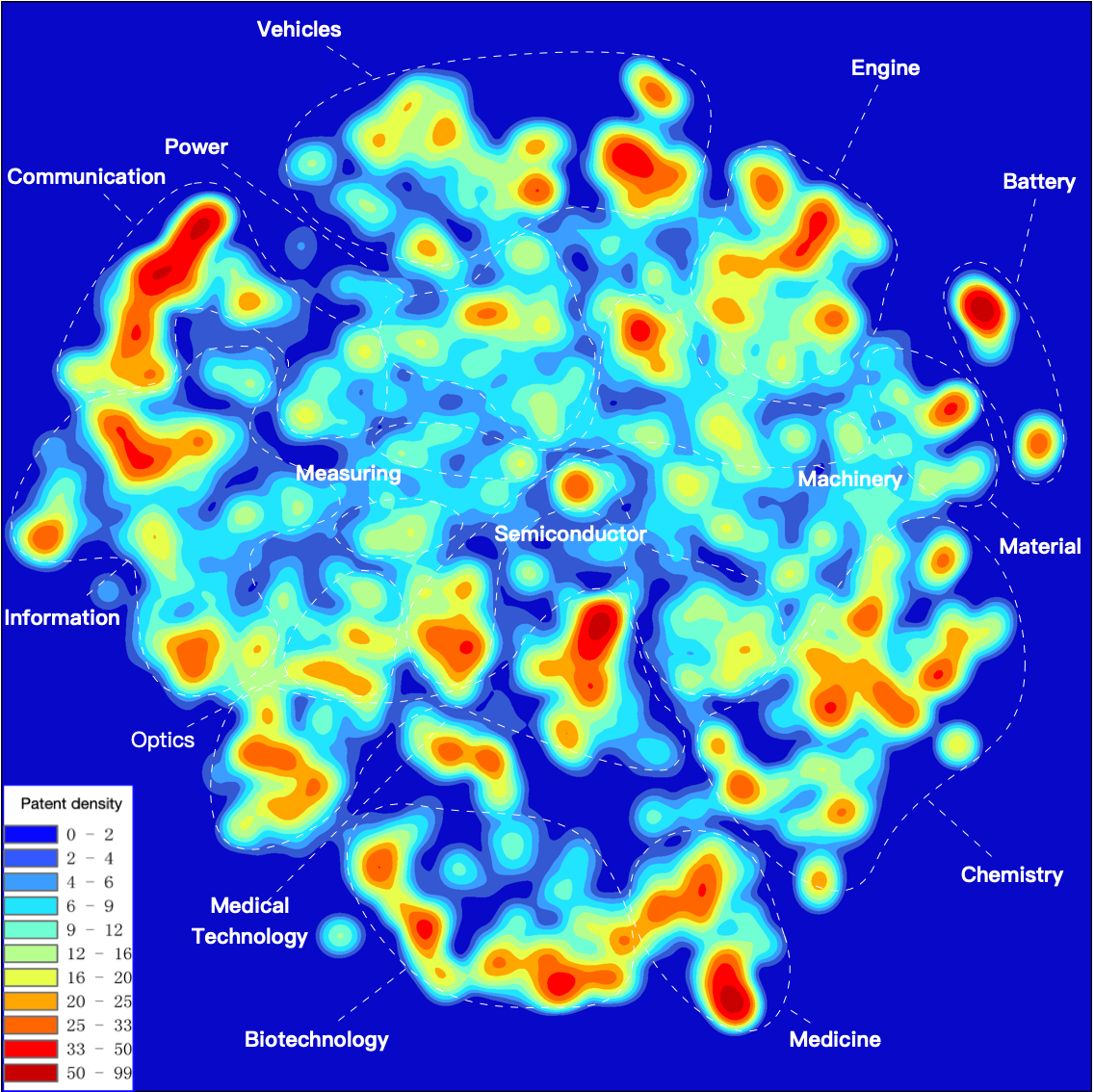
The common method of patent layout analysis is to use the patent classification system (IPC/CPC) for statistical analysis, but not for analysis in the industrial technology fields. And the classical citation co-occurrence analysis has shortcomings too.
A research team from the Institutes of Science and Development of the Chinese Academy of Sciences (CASISD), developed a more scientific and reasonable method for technology structure discovery.
The purpose of the report is to describe current global technological landscape, enabling experts and policymakers to intuitively observe the development trend of frontier technologies and allow science and technology to better serve the economy objectively and thoroughly, said Prof. PAN Jiaofeng, president of CASISD.
According to the reports of “2021Technology Focus” and “Mapping Technology Structure 2021” released on June 4, the researchers used deep learning models to learn the line characteristics of patent texts, trained a dedicated patent text feature extraction model, and used it as a basis to draw a panoramic patent structure map and form a patent technology hotspot database.
Among the 7,375 technology focuses in 32 technology areas of four technology divisions of electrical engineering, instrumentation, chemistry, and mechanical engineering given by the World Intellectual Property Organization, the "2021 Technology Focus" report selects the top 100 technology focuses, based on data from the World Technology Focus database, and further provides detailed interpretation on certain key technology focuses.

Mapping technology structure (Image by CASISD)
This study suggests that China's technological research capabilities have seen a steady growth from 2014 to 2019, by contributing to 12,284 (4.5 percent) of the global total number of "triadic patents" within the period.
Prof. WANG Xiaomei, a researcher from the institutes and one of the key authors of the report, said that China is the only country among the world's top six holders of triadic patents that is still experiencing relatively fast growth in this field. "However, creating more high-quality patents is one of the major challenges for China", she said.
From 2014 to 2019, China ranked fourth in the world in terms of the total number of triadic patents, with communication and information technology being the nation's most technologically advantageous field.
Meanwhile, China is noticeably behind both in the diversity and total number of triadic patents, compared with other technological powerhouses such as Japan, the U.S. and Germany. For instance, Japan held 91,618 such patents from 2014 to 2019, followed by the U.S. with 71,658 and Germany with 20,793.
“Medical technologies, biomaterials, machine tools and engine design are technological fields featuring high-quality patents in which China needs considerable improvement to catch up with other major economies,” said Prof. WANG.
So far, CASISD has formed a series of scientific and technological think tank outputs, such as "Research Fronts" and "Mapping Science Structure" based on the analysis of high impact papers, and "Technology Focus" and "Mapping Technology Structure" based on the analysis of high value patents.

86-10-68597521 (day)
86-10-68597289 (night)

86-10-68511095 (day)
86-10-68512458 (night)

cas_en@cas.cn

52 Sanlihe Rd., Xicheng District,
Beijing, China (100864)

